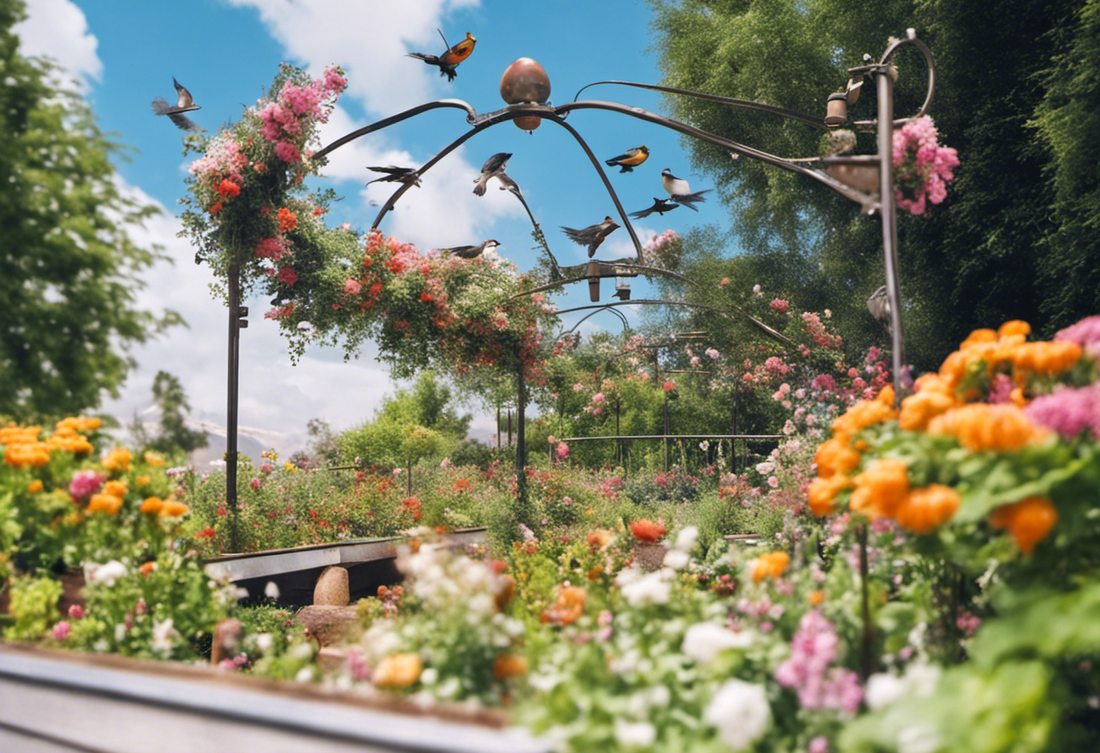As the vibrant colors of summer fade away, it's time to start thinking about how to care for your raised garden bed in the fall. While the cooler temperatures and shorter days may signal a slowdown in your gardening activities, there are still important tasks to be done to ensure the health and productivity of your raised garden beds.
In the last post, we explored the first 5 tasks about preparing your raised garden bed for autumn. Here, we continue to discuss the other five tasks to do in Autumn for a metal raised garden bed.

Task 6: Amend and Nourish Soil
Should you empty your raised garden beds for the winter? No, just leave the soil, but continue to amend it over time to replace the nutrients that have been used up by the plants and leached out by watering.
When the soil is cleared of plants, the next step in preparing a raised bed garden for winter is to assess the soil level. With new gardens in particular, the soil can sink in the first year. Add a few inches of fresh soil if needed. Even if your soil level stays steady, also add an inch or two of well-rotted compost.
Compost helps fortify and nourish your soil for growing the best plants possible in the spring. If you think your soil needs a fresh infusion of garden fertilizer, that's another task to include on your list of what to do with raised garden beds in winter.
Adding organic matter to your soil would be a logical next step. If you add organic matter to your soil, just top-dress it. During wintertime, the natural cycles of freezing and thawing will help work that material in. When you go to plant, that added material is going to get added and incorporated into your soil as well.
Task7: Put Away Stakes and Plant Supports
Properly store tomato cages, cucumber trellises, stakes, and other plant supports not attached to your raised beds. Begin by cleaning these items thoroughly to remove soil and debris. Once cleaned, store them in a dry place such as a garden shed or garage to prevent damage and decay over the winter months. This step helps to avoid rust and rot, extending the lifespan of your gardening tools.
During storage, take the opportunity to perform maintenance on these tools. Sharpen any blades and oil hinges, and replace worn-out parts as needed. Proper tool maintenance not only prolongs the life of your gardening equipment but also ensures that they are ready and functional for the next planting season.
For those with portable raised beds, consider moving them into a sheltered area like a shed or garage to protect them from the harsh winter elements. If space is limited, you can tuck them beside a garage or under an overhang and cover them with a tarp. To secure the tarp and prevent it from being blown away by winter storms, weigh it down with rocks, bricks, or wood. This protection prevents weather-related wear and tear and helps your raised beds last longer, ensuring they are in good condition for spring planting.
Task 8: Protect Your Garden Bed from Pests and Frost
Autumn is a prime time for pests such as rodents and insects to find refuge in your garden beds. To deter these unwelcome guests, it's essential to keep the area around your garden beds clean and free of debris. Employing row covers or netting can provide a physical barrier that protects your plants from pest infestations.
As the temperature begins to fall, consider using a frost blanket or row cover during the cooler nights. This protective layer can significantly extend your growing season and safeguard frost-sensitive plants from damage due to cold.

Task 9: Check for Slugs and Add Worms
If you are utilizing covered raised beds during the autumn, remain vigilant for slugs, which thrive in the moist conditions typical of a mild, wet fall. Regularly inspect the hidden corners and crevices of your garden beds for these pests, which can be detrimental to your plants.
While spring is commonly the preferred time to introduce worms to the garden, adding them in the fall can also be beneficial. As long as the soil temperature remains above freezing (32°F) and the ground isn’t frozen, introducing live worms can help improve soil health and fertility. These worms will aerate the soil and enhance nutrient availability, setting up your garden for success in the coming season.
Task 10: Add season extenders
Extending your growing season with the use of hoop tunnels and other season extenders can significantly boost your garden's productivity. To ensure you're ready for early frosts, prepare your hoops and brackets well in advance. Store your floating row cover neatly folded in an easily accessible place, ready to be deployed quickly when the weather turns. Check that the brackets inside your raised beds are intact and ready to accommodate the PEX pipe hoops. Keeping the floating row cover and spring clamps handy will allow you to secure the fabric swiftly, preventing it from being displaced by wind.
If you've already cleared your vegetable garden for the season, store these essential items in a shed or garage. This ensures they are readily available for early spring planting. One of the key advantages of using metal raised beds is that the soil within them warms up faster in spring compared to ground-level beds. This feature is particularly beneficial for planting cool-weather vegetables like peas, kale and root crops such as beets.
Despite cooler weather typically reducing the frequency of watering, it’s vital to keep a close eye on soil moisture levels. Plants still need adequate water to thrive, especially during dry spells. Regularly check the moisture in your raised beds and water deeply as needed to ensure hydration reaches the root zone of your plants.
Final Words
Maintaining your raised garden bed in the fall is essential for its long-term health and productivity. These garden chores may seem tedious, but you will appreciate the time spent learning how to prepare a raised garden bed in autumn. By fulfilling the tasks above, you can ensure that your garden bed remains vibrant and productive throughout the autumn season. With proper care and attention, your raised garden bed will be ready to thrive once again.

